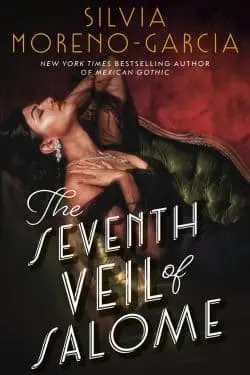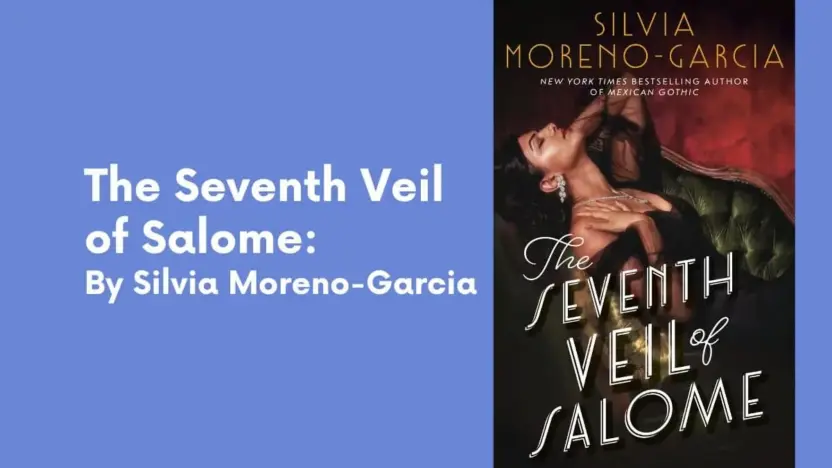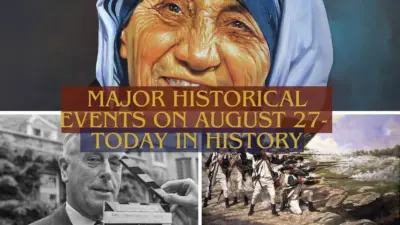Silvia Moreno-Garcia’s The Seventh Veil of Salome presents a captivating narrative that intertwines the glamorous yet ruthless world of 1950s Hollywood with the ancient, legendary tale of Salome. The novel, much like her previous works, dives deep into the complexities of ambition, identity, and the cost of fame. Set against the backdrop of a big-budget movie production, the story unfolds through multiple perspectives, offering readers a multifaceted view of both the characters’ internal struggles and the external pressures of the entertainment industry.
Plot Overview and Key Themes
At the heart of the novel is Vera Larios, a young actress who lands the coveted role of Salome in a film that everyone in Hollywood is vying to be part of. Vera’s journey from an obscure actress to a household name is fraught with challenges, not least of which is the personal transformation imposed upon her by the studio. The narrative intricately explores themes of self-identity and the masks people wear—both literally and figuratively—to navigate the treacherous waters of fame.
The novel also juxtaposes Vera’s story with that of Salome, the biblical figure known for her dance of the seven veils, which ultimately leads to John the Baptist’s execution. Through this dual narrative, Moreno-Garcia examines how women’s stories are often manipulated by those in power, reducing them to mere symbols or objects of desire. The book raises poignant questions about the cost of ambition, especially for women in an industry that frequently values appearance over talent.

Character Development and Relationships
The characters in The Seventh Veil of Salome are richly developed, with each having their own distinct motivations and arcs. Vera is portrayed as a complex character who is both determined and vulnerable. Her relationship with Jay, an aspiring musician, adds another layer to the story, illustrating the tensions between personal desires and professional ambitions. Jay’s different background and life experiences contrast sharply with Vera’s, providing a grounding force in her otherwise tumultuous journey.
Nancy, another key character in the novel, serves as Vera’s rival. While she might initially appear as the “villain,” Moreno-Garcia skillfully presents her as a more nuanced character whose actions, though questionable, are born out of her own set of challenges and ambitions. The dynamic between Vera and Nancy highlights the often adversarial relationships between women in competitive environments, further complicating the narrative’s exploration of gender and power.
Setting and Atmosphere
Moreno-Garcia’s depiction of 1950s Hollywood is both glamorous and gritty. The novel doesn’t shy away from the darker aspects of the entertainment industry, including the manipulation and exploitation that many actors, especially women, faced during this era. The author’s meticulous research into the period shines through, creating a vivid backdrop that immerses readers into the world of old Hollywood.
The parallel storyline set in ancient Judea, revolving around Salome, is equally immersive. Moreno-Garcia’s writing brings this historical setting to life, offering readers a fresh perspective on a story that has been retold countless times. The author’s ability to draw connections between the two timelines, despite their vastly different settings, is one of the novel’s greatest strengths.
Writing Style and Structure
One of the most notable aspects of The Seventh Veil of Salome is its narrative structure. The novel is told from multiple points of view, allowing readers to see the story from various angles. This approach adds depth to the characters and makes the narrative more engaging. Moreno-Garcia’s writing is both elegant and accessible, making it easy for readers to become absorbed in the story.
The book’s pacing is well-balanced, with the tension gradually building up to a satisfying climax. The dual narrative structure, while complex, is handled with skill, ensuring that both the Hollywood and Judean storylines are given equal weight and relevance.
Conclusion and Final Thoughts
The Seventh Veil of Salome is a compelling read that delves into the intricacies of fame, identity, and the often-blurred lines between ambition and morality. Silvia Moreno-Garcia once again proves her prowess as a storyteller, weaving together historical fiction with timeless themes in a way that feels both fresh and thought-provoking. Fans of her previous works, as well as new readers, will find much to admire in this beautifully crafted novel.
Also Read: Men Have Called Her Crazy: By Anna Marie Tendler (Book Review)



